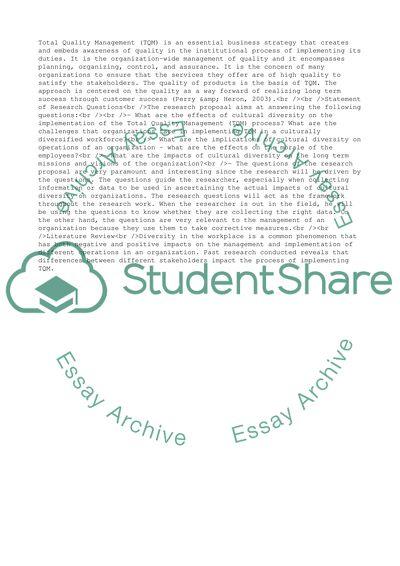Cite this document
(Implementing Total Quality Management - the Role of Human Resource Man Research Proposal, n.d.)
Implementing Total Quality Management - the Role of Human Resource Man Research Proposal. Retrieved from https://studentshare.org/management/1557359-challenges-in-implementing-a-total-quality-management-system-in-a-culturally-diversified-workforce
Implementing Total Quality Management - the Role of Human Resource Man Research Proposal. Retrieved from https://studentshare.org/management/1557359-challenges-in-implementing-a-total-quality-management-system-in-a-culturally-diversified-workforce
(Implementing Total Quality Management - the Role of Human Resource Man Research Proposal)
Implementing Total Quality Management - the Role of Human Resource Man Research Proposal. https://studentshare.org/management/1557359-challenges-in-implementing-a-total-quality-management-system-in-a-culturally-diversified-workforce.
Implementing Total Quality Management - the Role of Human Resource Man Research Proposal. https://studentshare.org/management/1557359-challenges-in-implementing-a-total-quality-management-system-in-a-culturally-diversified-workforce.
“Implementing Total Quality Management - the Role of Human Resource Man Research Proposal”. https://studentshare.org/management/1557359-challenges-in-implementing-a-total-quality-management-system-in-a-culturally-diversified-workforce.


